Analyzing the O.J. Simpson trial before ESPN 30 for 30
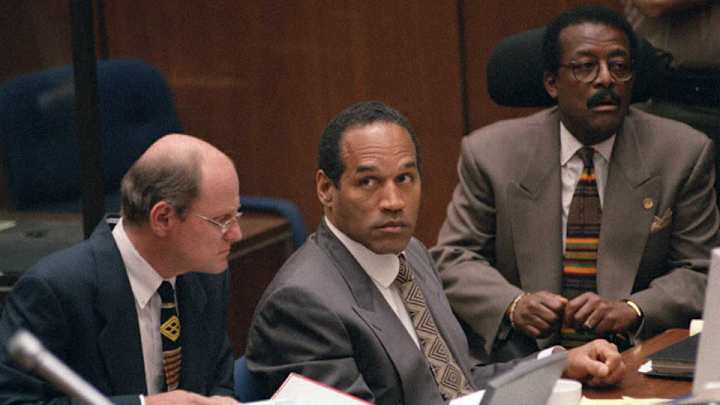
Your teams. Your favorite writers. Wherever you want them. Personalize SI with our new App. Install on iOS or Android.
Over the next week, ABC and ESPN will air the five-part series, “O.J: Made in America.” SI media columnist Richard Deitsch, who watched the series in a prescreening, hails it as the best 30 for 30 documentary ESPN has ever produced. The documentary will explore Simpson’s life, with a particular focus on the 1995 trial of Simpson for the murders of his ex-wife, Nicole Brown Simpson, and Ronald Goldman.
Twenty-one years after the “trial of the century,” many still wonder why the 10 women and two men who served on the jury found Simpson not guilty. The evidence against Simpson was compelling, multi-faceted and, by and large, irrefutable. The defense’s strategy of suggesting a racist plot by law enforcement to plant incriminating evidence was at best speculative and at worst implausible. Yet after listening to 126 witnesses and observing 1,105 pieces of evidence during a nine-month trial, the jury needed only four hours to deliberate. On Oct. 3, 1995, more than 150 million Americans—including me, a college sophomore at the time—watched Simpson and his legal team react as Deidre Robinson, the clerk of Los Angeles District Judge Lance Ito, read aloud, “We the jury in the above entitled action find the defendant, Orenthal James Simpson, not guilty of the crime of murder.” Simpson, who was then 48 years old, walked out of court a free man.
Inside O.J.: Made In America, ESPN’s best-ever 30 for 30 film
To be sure, Simpson’s freedom would come with costs and also end sooner than expected. On Feb. 4, 1997, a Santa Monica (Calf.) jury found him liable for the wrongful deaths of Brown and Goldman and ordered Simpson to pay their families $33.5 million. On Oct. 3, 2008—13 years to the day he was found not guilty of murder—a Nevada jury convicted Simpson of 10 charges stemming from a robbery of sports memorabilia. Nevada District Court Judge Jackie Glass would sentence Simpson to 33 years in prison. Shortly thereafter, Simpson became Nevada Prisoner number 1027820. He is currently incarcerated at the state’s Lovelock Correctional Center. Simpson will be eligible for parole in October 2017, at which time he’ll be 70 years old.
Still, Simpson “won” the trial of greatest significance: the murder case. Below I recap the two murders and analyze controversial legal strategies from the trial.
I. The murders
Nicole Brown Simpson, 35, and Ronald Goldman, 25, were brutally murdered at approximately 10 p.m. PDT on June 12, 1994. The murders occurred right outside of Brown’s condominium on 875 South Bundy Drive in the Brentwood section of Los Angeles. Goldman, an aspiring actor and a waiter at the posh Santa Monica restaurant Mezzaluna, had met up with Brown to return a pair of sunglasses that her mother had left behind at the restaurant. Goldman and Simpson had no known connection to one another before that evening.
Twenty years after infamous Bronco chase, O.J. Simpson still a mystery
While the exact sequence of the two murders remains a point of controversy, one theory offered during the trial surmised that the assailant first attacked Brown. He did so by striking her in the head with an object, perhaps the end of a knife or a metal handrail or post. The assailant then repeatedly stabbed and slashed Brown, including to her head and neck.
As Brown fell to the ground, the assailant then attacked Goldman. Goldman suffered approximately two dozen stab wounds, including to his face, ears and chest. The assailant then returned to attack Brown, who by that point was on the ground staggering and bleeding profusely. The assailant violently pinned her to the pavement, causing her to suffer a back injury, and then slashed her across the throat.
Neither Brown nor Goldman died immediately. Testimony by pathologists during the trial indicated that they defended themselves and struggled to survive for minutes. Along those lines, both Brown and Goldman appeared to have suffered defensive wounds, which suggested that they might have inflicted injuries upon the assailant. A neighbor would discover their bodies at 12:10 a.m. The neighbor had earlier found Brown’s dog, which had bloody paws from walking near the bodies of Brown and Goldman, loose.
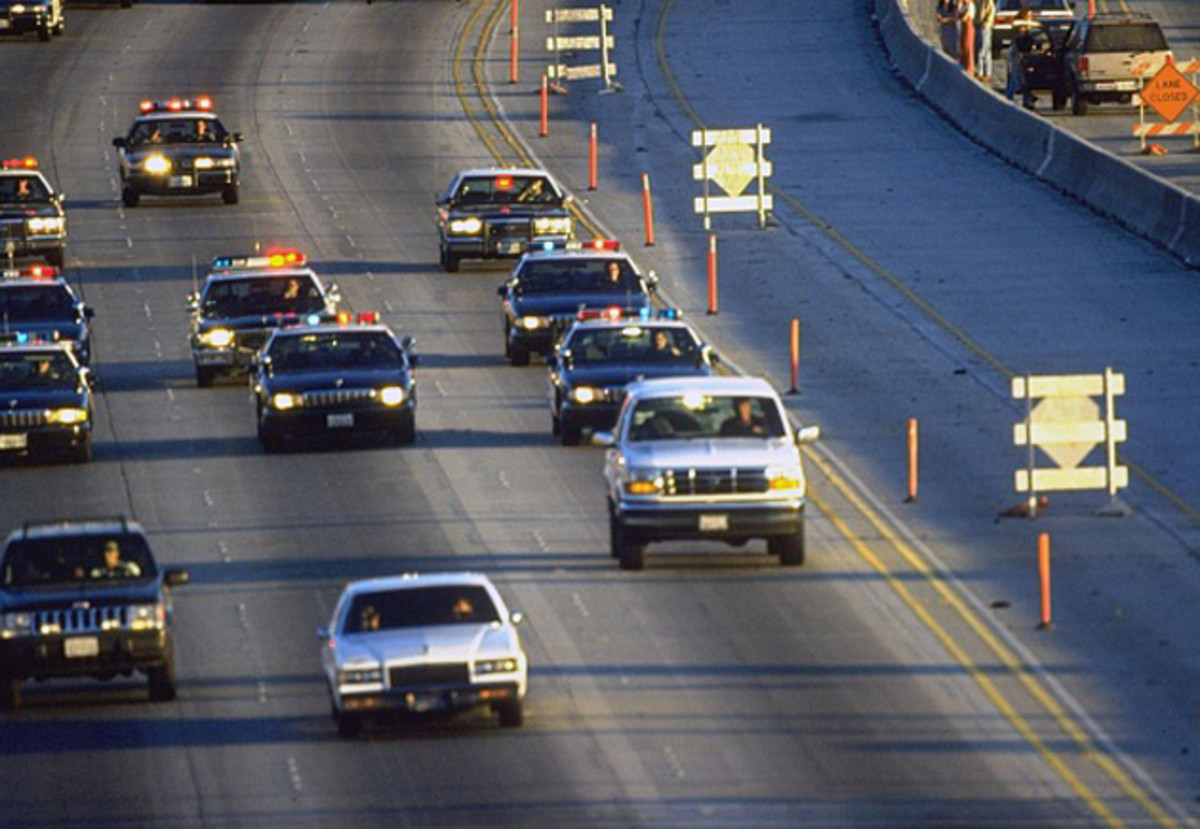
II. Simpson’s uncertain whereabouts and race quickly plays a key role
Simpson’s whereabouts at this time were crucial. He and his houseguest, Kato Kaelin, had been in Simpson's Bentley and purchased burgers from a McDonald’s drive through at 9:25 p.m. and drove back to Simpson’s home on 360 North Rockingham Avenue in Brentwood. Simpson, in the words of assistant district attorney Marcia Clark, “wolfed” his burger down on the ride home. Kaelin last saw Simpson standing next to his Bentley at approximately 9:35 p.m. Kaelin indicated that he assumed that he and Simpson would go inside the house, but Simpson acted as if he wanted Kaelin to leave him alone. Kaelin then returned to his room.
Hogan’s lawsuit vs. Gawker could have massive impact on journalism
According to Allan Park, a limo driver who was set to drive Simpson to Los Angeles International Airport for an 11:45 pm flight to Chicago, Simpson was not home—or at least not answering the intercom—at 10:40 p.m. Park then observed a 6’0", 200-pound African-American man (Simpson is 6’1", 210 pounds), walk up the driveway at approximately 10:55 p.m. and enter the house and turn the lights on. Park then used the intercom to contact Simpson, who claimed he had overslept, was getting out of the shower and would be out in a minute. As he promised, Simpson exited his house within five or six minutes, with a garment bag in hand for the business trip. Park quickly drove him to the airport. Even though it was a relatively cool evening, Park recalled Simpson oddly saying how hot he felt. Simpson would make his flight and arrive in Chicago during the early morning.
At about 5:00 a.m., LAPD Detectives Mark Fuhrman and Philip Vannatter arrived at Simpson’s Brentwood estate. They discovered a bloodstain on Simpson’s white Ford Bronco. Fuhrman then decided to jump the wall onto Simpson’s property in order to enter the estate. Simpson’s daughter, Arnelle, was awoken and told Fuhrman that her father was out of town. By 7 a.m., Vannatter decided to seek a warrant to search the house. He and Fuhrman agreed that Simpson’s property was part of the crime scene. At around this time, LAPD detective Ronald Phillips called Simpson in Chicago to inform him of his ex-wife’s murder. Phillips would testify that while Simpson seemed upset by the news, he strangely failed to ask Phillips how, where or when Brown had been killed.
After Simpson returned to L.A. on June 13, he was questioned by the LAPD at his home and in the presence of attorneys. During this questioning officers temporarily handcuffed Simpson, despite the fact that Simpson had not been charged and, at least at that moment, posed no danger to anyone. TV cameras caught the handcuffing on video. It suggested to some that the LAPD was treating Simpson more harshly because he was an African-American male. Race relations between the LAPD and Los Angeles residents were very strained at this time. Only two years earlier, riots followed the acquittal of four LAPD officers who were videotaped beating Rodney King.
• VAULT: Fatal Attraction: O.J. Simpson stands trial
Simpson was supposed to turn himself in at 10 a.m. on June 17 as part of a deal reached between his attorney, Robert Shapiro, and LA district attorney Gil Garcetti. He never showed up. Instead, Simpson stayed at the home of his longtime friend and counsel Robert Kardashian. With his arrest imminent, Simpson and friend/ex-teammate A.C. Cowlings jumped into Cowlings’ white Ford Bronco (Cowlings idolized Simpson, who also owned a white Ford Bronco) and drove off on the California freeway. Simpson left behind a letter that read like a suicide note, particularly when stating, “Don't feel sorry for me. I've had a great life, great friends. Please think of the real O.J. and not this lost person. Thanks for making my life special. I hope I helped yours. Peace and love, O. J." After a surreal slow-speed “chase” that approximately 95 million Americans watched on TV, Simpson returned to his home on Rockingham and was arrested without incident. The police then searched Cowlings’ car and found $8,750 in cash, a false beard and mustache, a loaded gun and a passport.
III. The district attorney’s decision to try the case in downtown Los Angeles remains perplexing to this day
Typically, a prosecution occurs in the judicial district where all or most of a crime took place. It was thus expected that Simpson would be prosecuted at the Santa Monica Courthouse, which normally hears cases involving matters in Brentwood and other nearby locales. Had Simpson been prosecuted in Santa Monica, the jury pool would have been drawn from a relatively affluent and mostly white community—the very demographics that prosecutors often find favorable. The prosecution instead filed the case in downtown L.A., a much more racially, ethnically and economically diverse community, and one with salient reasons to distrust law enforcement. Some have described this decision as the most meaningful one by the prosecution in the entire case. On that point (and on all points related to the Simpson trial), see University of Missouri-Kansas City law professor Douglas Linder’s excellent and comprehensive website on the trial.
The prosecution suggested that Los Angeles would be a more suitable location to handle the unrelenting media interest. It is also possible that race relations were on prosecutors’ minds, especially with the L.A. race riots having occurred only two years earlier. With a seemingly strong case against Simpson, the prosecution likely calculated that a conviction by a more diverse jury would offset any claims of racial bias. The jury that heard Simpson’s case consisted of nine African-Americans, two Caucasians and one Latino.
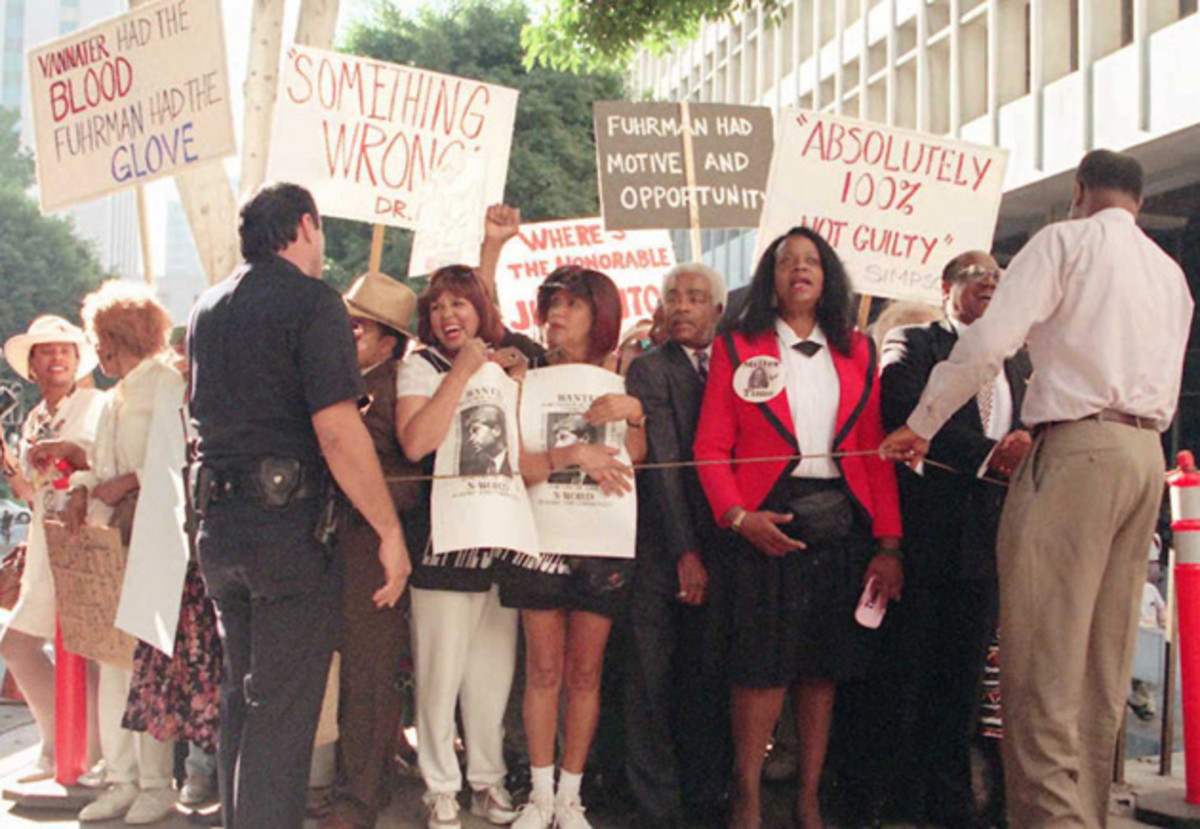
IV: The evidence against Simpson seemed persuasive . . .
The prosecution provided the jury with many reasons to find Simpson guilty. Among them:
- Simpson’s lengthy record of physically abusing Brown, his paranoid suspicions of Brown being with other men and audio of a chilling 911 call from 1993. Jurors also saw photos of extensive physical injuries Simpson had inflicted upon Brown. They were left with no doubt that Simpson had a history of hurting Brown, particularly when he thought that she was romantically involved with other men.
- Hair highly consistent with that of Simpson was found on Goldman’s shirt. This was a difficult, if not impossible, fact to explain away unless Simpson was involved in Goldman’s murder.
- Blood extremely likely—in some instances matching only one person in 57 billion—to be that of Simpson was found at all of the key crime locations: where the murders occurred, Simpson’s Bronco and several locations in and around Simpson’s home.
- Blood found in or around Simpson’s Bronco was highly consistent with blood from Brown and Goldman.
- Socks found in Simpson’s home revealed blood that was highly consistent with blood from Brown.
- Bloody shoe prints highly consistent with shoes worn by Simpson (size 12 Bruno Magli) were found at the murder scene and in his car.
- A bloodied left hand “Aris Light” glove was found at the murder scene and a right one was found at Simpson’s home. The right one had blood that matched blood from Goldman. Simpson was thus linked to Goldman, whom he did not know, at both the murder scene and in Simpson’s home.
- Simpson had suffered a significant wound to the knuckle of his left middle finger and changed his story about how it happened. He initially told investigators the injury happened in his hotel room in Chicago, but then said the injury happened before his trip. He then changed his story again, saying the injury in fact occurred in Chicago. Simpson’s inability to provide a consistent account about an injury that prosecutors believed occurred while Goldman and Brown defended themselves undermined his defense.
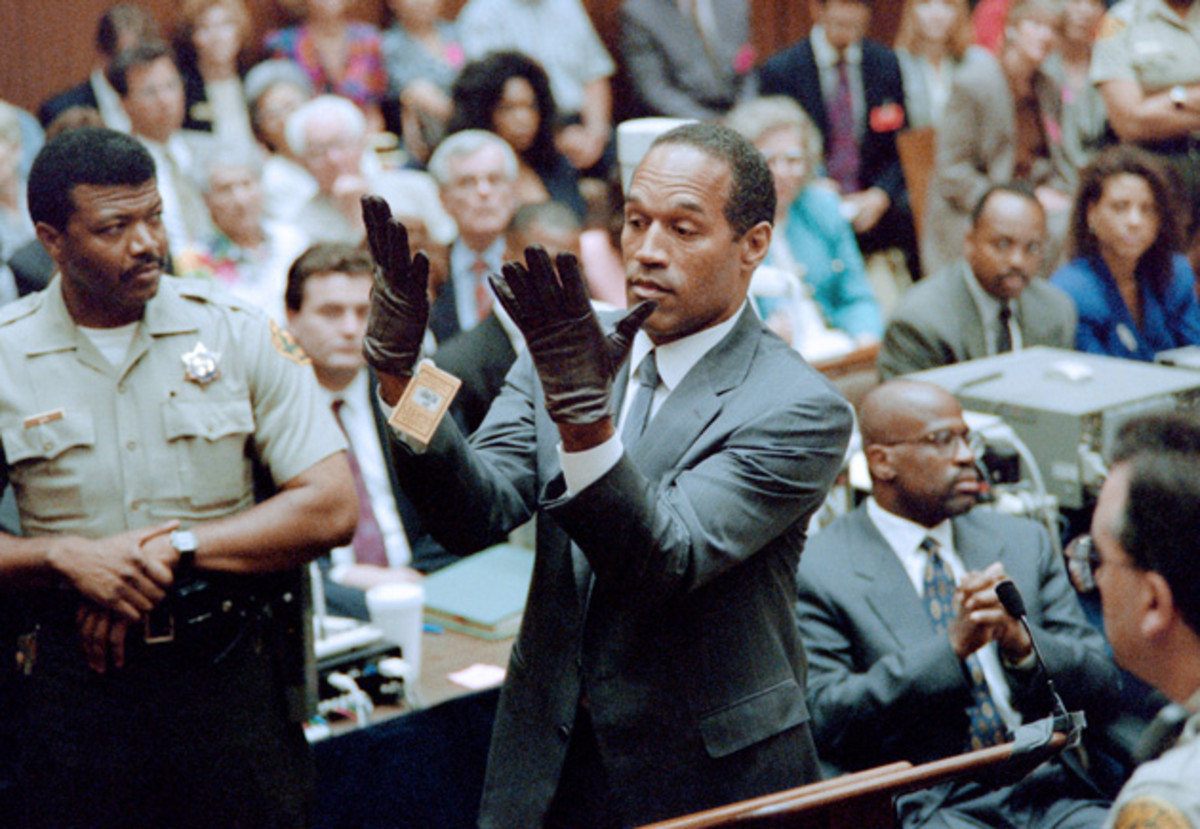
. . . but costly missteps by law enforcement and prosecution gave the jurors reason to wonder
By virtue of his wealth, Simpson could afford to assemble a legal team that the typical person could only dream of. This is part of the reason why his attorneys were dubbed, “the dream team.” In addition to Shapiro, Simpson retained highly skilled defense attorney Johnnie Cochran, famed Harvard Law School professor Alan Dershowitz, prominent trial attorney F. Lee Bailey and DNA expert Barry Scheck and several other high profile attorneys.
Simpson’s attorneys identified several key deficiencies or mistakes in the prosecution’s case. Among them:
- The prosecution badly underestimated the role race would play during the trial. Led by lead attorney Cochran, Simpson’s legal team exposed Fuhrman—who, along with Phillips, was the first LAPD officer to investigate the crime—as racist. The jury learned that Fuhrman had used the “n” word repeatedly in the past, in direct contradiction of his trial testimony. Cochran went so far as to call Fuhrman a “perjuring genocidal racist” and in his closing argument, Cochran decried Fuhrman as “the personification of evil.” The demonizing of Fuhrman helped the defense insinuate that Fuhrman was both dishonest and racist, and thus might have planted a glove and blood at Simpson’s residence in order to frame Simpson.
- Approximately 1.5 cubic centimeters of the eight cubic centimeters of blood taken from Simpson was missing. This enabled Simpson’s attorneys to suggest that perhaps Fuhrman had planted Simpson’s blood. Assistant DA Clark attempted to debunk this theory by stressing its near impossibility given tight time constraints and the necessity of a wide-ranging conspiracy on the LAPD to pull it off.
- LAPD criminologist Dennis Fung’s testimony over nine days undermined the credibility of the blood evidence. He was tasked with the collection of blood at the different crime locations related to Brown and Goldman’s murders. While under oath, Fung admitted that he failed to use rubber gloves at some points during the blood collection, that he did not collect blood from all of the relevant locations and that he returned weeks later to collect additional samples. Although Simpson’s legal team could not directly link Fung’s missteps with any faulty DNA results, Simpson’s lawyers only needed the jury to find reasonable doubt.
- In perhaps the most memorable moment during the trial, assistant district attorney Christopher Darden asked Simpson to try on the gloves. This seemed like a bad idea at the time and it proved to be just that. It was regrettable for a number of reasons, including that the gloves may have shrunk due to being frozen and unfrozen. Simpson would also first don latex gloves—thus creating less space between his fingers and the actual gloves and making the fit tighter. Simpson, moreover, was an actor and thus would be more skilled than the typical defendant in manipulating the evidence. Perhaps not surprisingly, Simpson exhibited an exaggerated “effort” to fit the gloves, but he claimed he could not. He then uttered, “They’re too small.”
What action will the NFL take after the hack of its Twitter account?
For jurors who were forced to listen to weeks of tedious testimony on DNA probability and forensics collection, watching Simpson stand before them and “struggle” to try on the gloves was surely memorable and easy to understand. In his closing statement, Cochran reminded jurors of the gloves, saying, “And so as we look then at the timeline and the importance of this timeline, I want you to remember these words. Like the defining moment in this trial, the day Mr. Darden asked Mr. Simpson to try on those gloves and the gloves didn't fit, remember these words; if it doesn't fit, you must acquit.”
- In 1997, the National Enquirer uncovered 1993 photos of Simpson wearing size 12 Bruno Magli shoes at a Buffalo Bills game. In the wrongful death trial, civil litigator Daniel Petrocelli adroitly used the photos to argue that Simpson must have been the murderer. In fact, only 299 size 12 pairs of this shoe had been sold by the date of the murders, and Simpson was the owner of one of those pairs. Better investigative work by the prosecution would have uncovered the photos sooner. Indeed, one of the photos was already published in the November 1993 issue of the Bills' official publication, Buffalo Bills Report. While that particular photo was of questionable quality in terms of showing Simpson’s shoes, it would have almost certainly been admissible against Simpson in the criminal trial.
VI: In hindsight, the prosecution would have been better off with a mistrial
Among the many problems caused by Fuhrman were his disparaging remarks about Judge Ito’s wife, Margaret Ann York, a deputy chief at the LAPD and someone who had supervised Fuhrman. On audio, Fuhrman is revealed to have made not only shockingly racist marks about African-Americans, but also incendiary statements about York, a white woman. Fuhrman reportedly ridiculed York’s appearance and suggested she was promiscuous as a means of advancing at the LAPD. When this came to light during the trial, the prosecution could have demanded that Judge Ito remove himself from the trial, which would have likely triggered a mistrial. Keep in mind, York might have been called as a witness and it would have been fair to surmise that Judge Ito’s partiality was impacted by a key witness’s derogatory remarks about his wife. Instead, the prosecution acquiesced to Judge Ito asking another judge to review whether he had been conflicted out. Judge Ito would remain and York would not testify.
A mistrial is appropriate in a number of circumstances, including when a judge’s ability to be fair is comprised. Had Judge Ito declared a mistrial, the prosecution would have sought to retry Simpson with a different jury. The prosecution would likely have attempted to try Simpson in Santa Monica, although Simpson’s attorneys would have fought a change in venue.
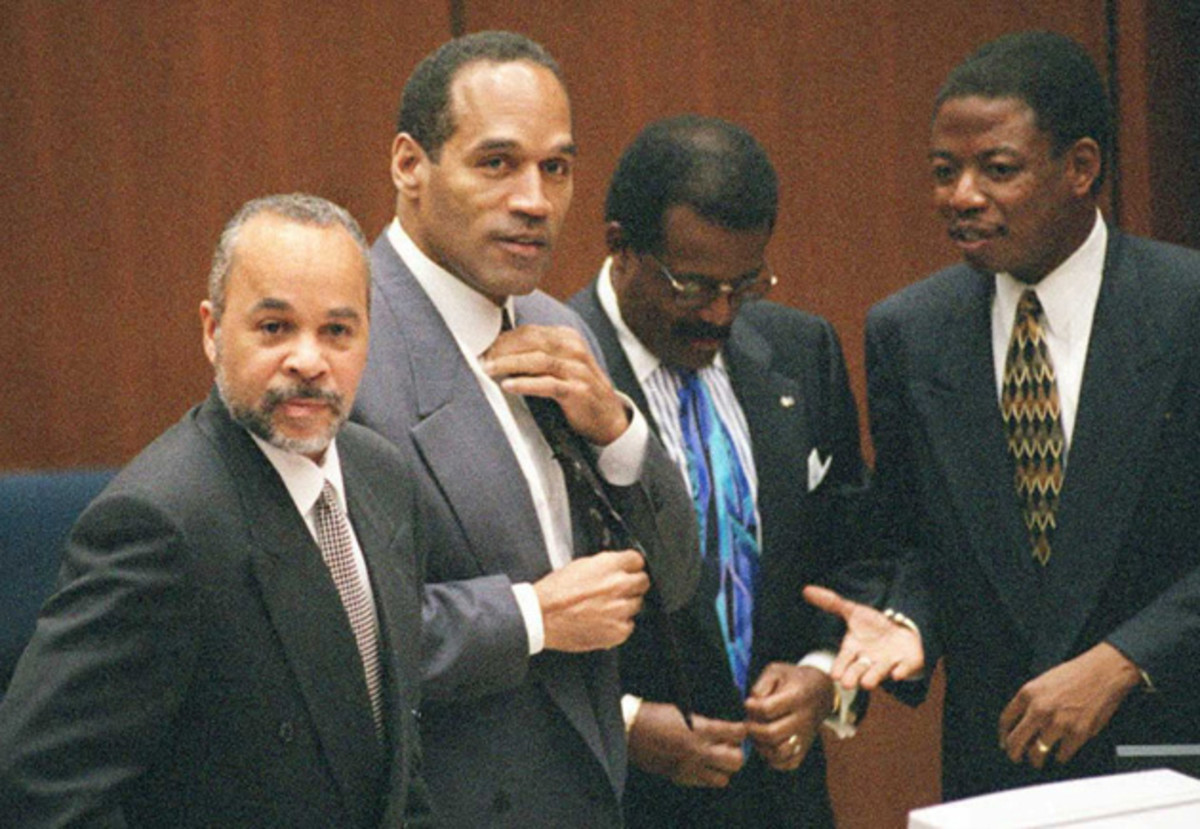
Simpson’s attorneys would have also asserted that Simpson’s “double jeopardy” protection under the Fifth Amendment would be imperiled by a retrial. Double jeopardy prevents U.S. citizens from being retried for the same offense twice and this right attaches upon the empanelment of the jury. Simpson’s attorneys would have blamed the prosecution for failing to better know their own witnesses before going to trial. The attorneys would have also contended that given the massive media attention devoted to the trial, it would have been impossible for Simpson to obtain a fair retrial.
In all likelihood, however, the prosecution would have been able to overcome a double jeopardy claim. The prosecution would have insisted the mistrial was declared out of “manifest necessity”—the relevant standard enunciated by the U.S. Supreme Court. The prosecution would have stressed that it had no idea Fuhrman had made such remarks and the necessity of a mistrial was not the prosecution’s fault.
• Tom Brady vs. NFL: What new amicus briefs mean
In a “do-over” trial, the prosecution would have been far better equipped to contain the fallout of Fuhrman’s racist past. Given Fuhrman’s significance to the collection of murder evidence, he would have almost certainly had to testify, but the prosecution could have marginalized his role to the greatest extent possible. During the trial that actually occurred, the prosecution incorrectly calculated that Fuhrman could overcome questions about his past. In a retrial, the prosecution would have known 1) Fuhrman lacked the ability to overcome his past and 2) Cochran knew how to astutely use Fuhrman’s past to reshape the trial from one about Simpson to one about the LAPD.
But there was no retrial. Instead, Simpson was found not guilty. Over the next week, it will be very interesting to watch ESPN illuminate this controversial outcome and the impact that it still has on America.
Michael McCann is a legal analyst and writer for Sports Illustrated. He is also a Massachusetts attorney and the founding director of the Sports and Entertainment Law Institute at the University of New Hampshire School of Law. McCann also created and teaches the Deflategate undergraduate course at UNH. He serves on the Board of Advisors to the Harvard Law School Systemic Justice Project and is the distinguished visiting Hall of Fame Professor of Law at Mississippi College School of Law. He is also on the faculty of the Oregon Law Summer Sports Institute.
